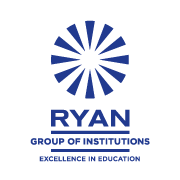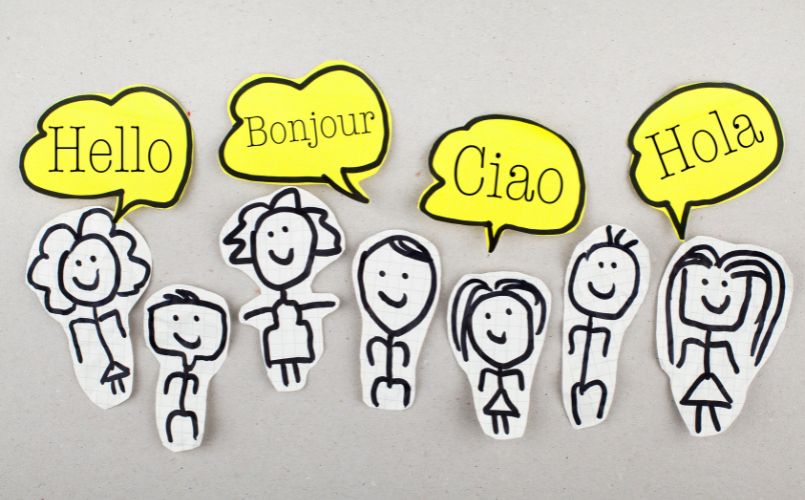India boasts of a tapestry of languages with the Constitution recognizing 22 languages and a staggering 19,500 dialects spoken throughout the nation. This diversity serves as both a treasure and an educational challenge. The goal of education in India is to break down language barriers ensuring that every child can learn effectively regardless of their tongue.
Why does multilingual education hold significance in India?
Multilingual education plays a role in India for variety of reasons. It enables children to learn in their mother tongue, which’s essential for grasping concepts and nurturing a strong connection to their heritage. Additionally it promotes development, Improves communication skills across different language contexts fostering national unity and cultural appreciation.
Studies have shown that children who receive education in their language demonstrate enhanced cognitive growth and academic performance. According to a UNESCO report multilingual education not enhances achievements but also helps reduce dropout rates.
This educational approach honors India’s diversity serving as a foundation, for promoting equality and inclusivity. By incorporating languages into the curriculum schools can ensure that the new generations are not only proficient, in multiple languages but also possess heightened empathy, cultural awareness and intellectual flexibility.
Advantages of Multilingual Education
The introduction of multilingual education in India brings forth an array of benefits across cognitive, academic and socio cultural domains. It serves as a tool for growth and societal coherence empowering students to adeptly navigate the intricacies of our interconnected world with confidence and ease.
Cognitive Adaptability; Multilingual education nurtures adaptability by enhancing students’ capacity for thinking, creativity, problem solving and efficient task switching. This mental agility is a skill in the evolving landscape of the 21st century.
Educational Attainment; Learning in a language that students are familiar with can greatly enhance their comprehension and retention of the content. This approach not only elevates performance in the short term but also establishes a strong foundation for continuous learning.
Socio cultural Advantages; By fostering proficiency in languages multilingual education aids students in cultivating a respect for cultural diversity. It promotes empathy and mutual understanding among peers, from backgrounds fostering social cohesion and national solidarity.
Multilingual learning goes beyond mastering languages; it’s, about broadening perspectives to ways of thinking and living. It uplifts the spirit, brings us together as a community.
Fun Fact; Did you know? Countries such as Switzerland, Canada and India are renowned for their strategies, which have played a role in fostering national unity and global competitiveness.
Parenting Tips; Show your support for your child’s education by;
- Promoting language acquisition at home through books, music and conversations in languages.
- Engaging in cultural exchange initiatives or local language clubs.
- Cultivating an environment that appreciates diversity and the acquisition of languages as a life skill.
The advantages of multilingual education are vast impacting every facet of a child’s growth and contributing to an inclusive, empathetic and interconnected world. By advocating for this approach India can leverage its variety as an advantage paving the way for a future where every child can realize their full potential.
Challenges in Enforcing Multilingual Education
Despite the benefits of multilingual education in India the journey, towards its successful execution is riddled with obstacles.”Various challenges exist in the realm of education spanning from resource related issues to educational and societal barriers. These obstacles necessitate consideration and strategic resolutions.
Logistical and Resource Challenges; One key hurdle revolves around the availability of resources, such, as trained teachers in multiple languages and culturally relevant teaching materials. Furthermore Indias diverse geographic and demographic landscape makes an approach to education unattainable underscoring the importance of tailored strategies that can adapt to the linguistic diversity across different regions.
Pedagogical Challenges; Crafting a curriculum that effectively incorporates languages while maintaining comprehensiveness and engagement poses another obstacle. Educators must strike a balance between goals. Delivering core content across various subjects requiring innovative teaching approaches and ongoing professional development.
Societal Challenges; Societal perceptions towards languages can influence the success of educational endeavors. Languages often carry economic implications resulting in preferences for languages over others. Overcoming these biases and emphasizing the value of all languages in education is vital for the triumph of initiatives.
A study conducted by the Ministry of Education revealed that than 10% of schools in India provide instruction in more than one local language underscoring the imperative need for enhanced investments, in multilingual educational infrastructure and teacher preparation. Karnataka state introduced a two language policy, in schools, which initially faced opposition from parents and teachers. However through comprehensive teacher training sessions and community involvement efforts the project showed improved student performance and gained wider acceptance over time.
Addressing these hurdles necessitates an effort involving stakeholders such as government entities, educational institutions, teachers and communities. Policies should be supported by funding, resources and training initiatives. Additionally nurturing an environment that appreciates diversity and multilingual education is crucial for the success of such programs.
Inspiring Stories
Exploring multilingual education schemes in India offers insights and models that can motivate future endeavors. These case studies not prove the viability of education but also underscore its positive impact on students, educators and communities.
The Nali Kali Initiative in Karnataka; This inventive program promotes ‘joy of learning’ in Kannada for education by integrating languages with English and Hindi. By adopting a child centered approach and utilizing materials, in languages the initiative has notably boosted literacy rates and school engagement levels in the region.
The achievements of Nali Kali highlight the significance of materials that’re culturally and linguistically relevant.
The Mother Tongue Based Multilingual Education (MTB MLE) initiative, in Odisha focuses on providing education in students’ mother tongue at the start of their schooling gradually incorporating English and other languages. This approach has resulted in enhancements in student involvement, understanding and overall academic achievements.
The success of the MTB MLE program in Odisha demonstrates the importance of honoring and integrating languages and cultures into education. It not only improves outcomes but also fosters a sense of cultural identity and pride among students.
Educational Recommendations; To emulate the accomplishments of these programs educators are advised to;
- Engage with the community to grasp the cultural backgrounds of their students.
- Advocate for creating and using materials in languages.
- Pursue professional development opportunities to refine their skills in multilingual teaching approaches.
Is education detrimental to student learning? Does it cause delays?
No, evidence, from research and real world applications indicates that executed multilingual education enhances adaptability and academic performance. It helps in enhancing comprehension and memory retention, across subjects.
The instances from Karnataka and Odisha demonstrate how strategic community focused approaches to teaching languages can tackle obstacles and bring advantages to students. These illustrations offer a framework for expanding programs in education highlighting the importance of community engagement, teacher empowerment and resource enhancement.
By drawing insights from these success stories India can progress towards utilizing its diversity in education fostering more inclusive and efficient learning environments for all students. Lets now turn our gaze towards the future and discuss the actions required to promote education in the nation.
The endeavor to unlock the potential of education in India is a continuous process. Building on achievements and experiences gained from initiatives future endeavors in education should prioritize scalability, sustainability and inclusivity. Here are key suggestions and factors to consider for progress;
Policy Implementation; Strengthening policy frameworks to back education is crucial. This involves increased investment in educator training creation of diverse language teaching materials and establishment of infrastructure for linguistic settings. Both central and state governments need to allocate resources and legal backing for initiatives promoting education.
Technological Advancements; Utilizing technology can be instrumental, in addressing resource constraints and geographical barriers.
Digital platforms have the potential to provide solutions, for education by offering a wide range of educational materials in different languages and supporting online training programs for educators.
Community Engagement; The success of education initiatives relies heavily on engaging with parents, community leaders and organizations to promote the importance of multilingualism and gather insights on language needs. This involvement can significantly enhance the effectiveness and acceptance of programs.
Expert Perspective; Dr. Ananya Roy, an expert in education policy emphasizes the importance of embracing multilingualism as an asset for Indias future. By prioritizing abilities we not enhance educational outcomes but also equip students with valuable skills that align with a world valuing cultural diversity.
Practical Steps for Parents and Educators;
- Advocate for policies supporting education at national levels.
- Incorporate language resources and teaching techniques into classrooms.
- Encourage children to learn and use languages both at home and, within their communities.
Multilingual learning serves as a method to connect people improve the quality of education and promote inclusiveness. India can enhance its system by embracing languages leading to a fairer and more vibrant learning environment. Moving forward it is essential for all involved parties to work together towards a goal of empowering each student with the ability to speak languages.




